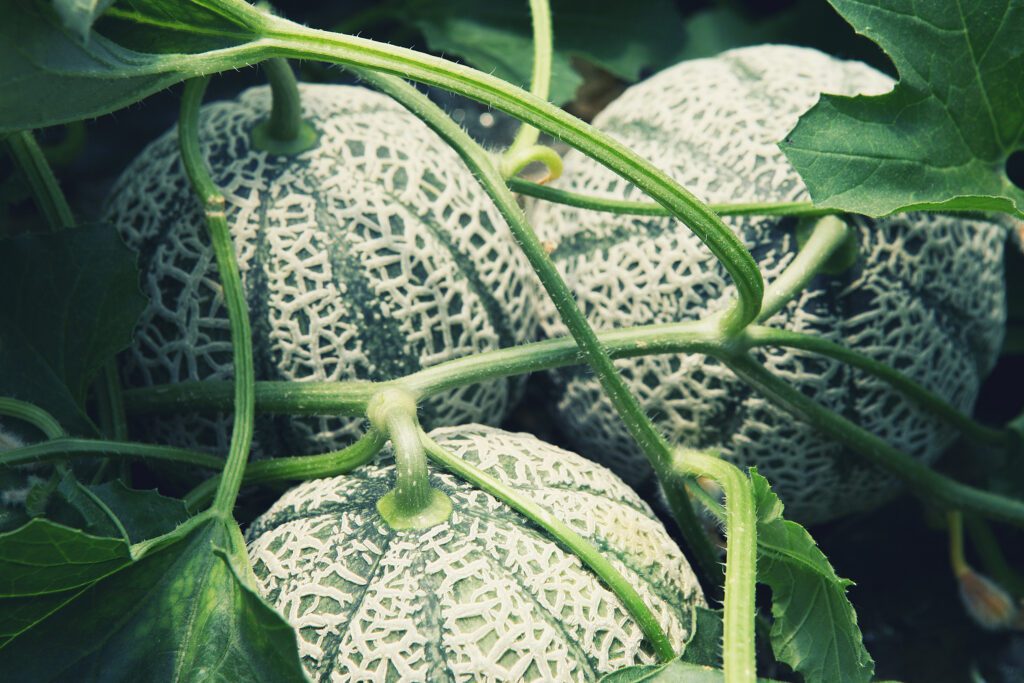by TERESA SCHIFFER
Sponsored by Farm Credit of Central Florida
When it comes to summer soirees with family and friends, there are few hors d’oeuvres as refreshing as a platter piled high with pieces of fruit from Florida. Served fresh from the fridge, the juicy bites of watermelon and chilled grapes are always a tasty treat. As we load our plates with nature’s sweetest treats, let’s not overlook the unsung hero of the festive fruit dish – the cantaloupe.
What’s In a Name?
Though the term “cantaloupe” is now commonly used in the U.S. to refer to the cucurbit muskmelon, or Cucumis melo var. reticulatus, fruit experts would refer to C. melo var. cantalupensis as the “real” cantaloupe. Those are the European variety of the melon, which are very similar to our familiar muskmelon cantaloupes, though a bit sweeter in flavor.
The muskmelon/cantaloupes that are grown in Florida are well adapted to dry conditions, though they do require consistent moisture to produce an acceptable yield. These melons thrive in the heat and sunshine, especially in a fertile, well-drained, slightly acidic sandy or silt loam soil. The soil in Central Florida, where the state’s cantaloupe production is concentrated, is generally perfect, as long as the nutrients of the soil are balanced. Too much nitrogen can have a negative impact on the quality of the fruit produced.
You’ll find fresh cantaloupe in Florida markets from April to June. The mellow melons are grown primarily in Central Florida and in the panhandle. They often come from farms that are better known for other crops. In Hillsborough County, for example, strawberry growers may opt to produce cantaloupe after clearing out the year’s strawberry harvest. Several varieties of cantaloupe are cultivated in Florida, including Ambrosia, Athena, Honey Rock, Galia, and Minnesota Midget.
Cantaloupe by the Numbers
Nationwide, Americans consume about 6.1 pounds of cantaloupe annually (according to the Agriculture Marketing Resource Center, 2019), out of 24 pounds of total melons consumed every year. The value of the United States’ cantaloupe production in 2021 was $295.73 million.
In Florida, cantaloupe is grouped with other melons, vegetables, and berries, and as of 2020 was ranked 12th in value within that group. Of nearly 200,000 acres of vegetables and melons harvested in Florida in 2021, cantaloupe accounted for 1,500 of those acres.
Fun Facts About Cantaloupe
- Cantaloupe derives its name from Cantalupo, Italy, where the melon was reportedly first produced in the papal gardens.
- The plants usually produce ripe fruit about 75 to 100 days after planting.
- A ripe, uncut cantaloupe will stay fresh for about seven to 10 days, while the cut melon will last for roughly three to five days when stored in the refrigerator.
- Cantaloupe is a delicious source of vitamin C and potassium, making the fruit great for helping to maintain a proper balance of fluids in the body, while also lowering blood pressure and easing muscle cramps.
- As members of the Cucurbitaceae family, cantaloupes are closely related to cucumbers, squash, pumpkins, and watermelon, meaning they also grow on vines.
- What we know as “cantaloupe” was originally named “muskmelon” due to the musky aroma given off by the ripe fruits.
- In other parts of the world, cantaloupe is referred to as rockmelon, spanspek, and sweet melon.
Now that you know a little more about this humble yet versatile melon, be sure to pick up some Florida fresh cantaloupe on your next grocery trip! Try tossing some chunks in the blender with vanilla ice cream and a splash of orange juice for a refreshing summer smoothie.

